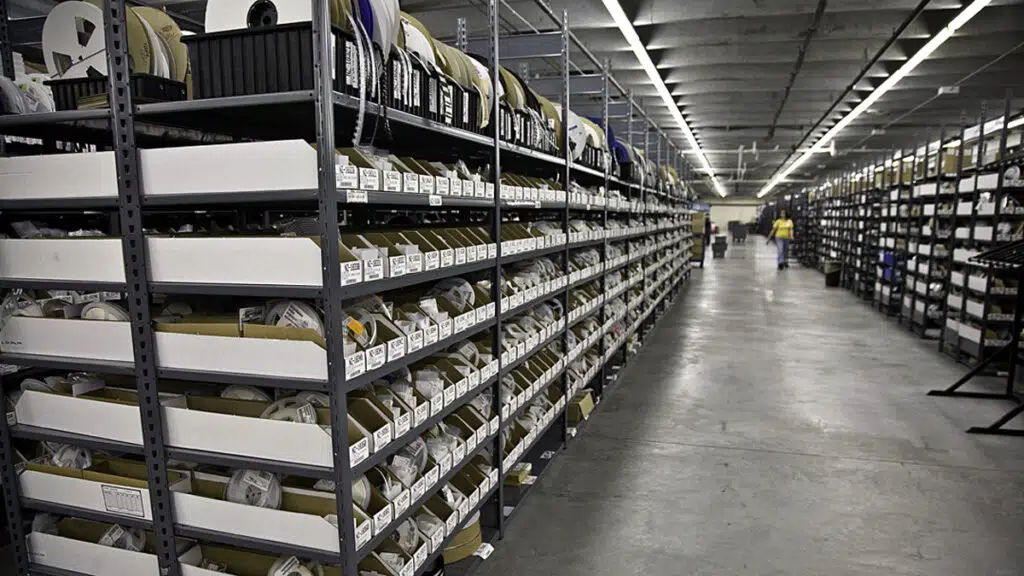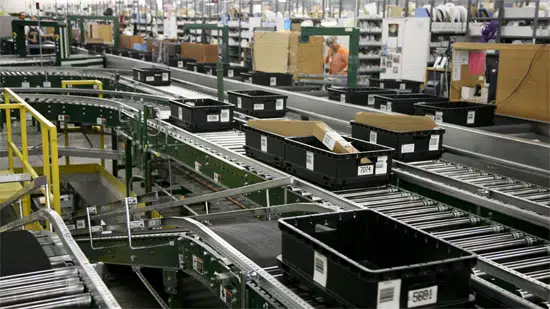We’re in the midst of what could be called a “perfect storm” that is creating significant supply chain shortages for electronic components. Margaret Cunha, director of regional supply chain solutions and David Stein, Vice President, Global Supplier Management of Digi-Key Corporation shared their view of current components supply chain factors and challenges.
The market demand for semiconductors has exploded over the past four to six months, as many industries have increased demand for these components, which are used in increasingly large volumes and applications.
Even before the COVID-19 pandemic, supply chains were beginning to show signs of shortages, and the far-reaching effects of the global pandemic starting in 2020 slowed or shuttered production of these essential components for days, weeks or even months at a time.
Effects Across Industries
This shortage has broad implications for the industries that consume not only semiconductors, but other electronic components as well. Some of the products that end customers such as OEMs and contract manufacturers are challenged with obtaining are discretes (diodes, rectifiers, mosfets, IGBTs), linear analogue, microcontrollers and microprocessors, sensors, commodity and high-end logic.
Now, with the development and rollout of several COVID-19 vaccines, industries are once again beginning to ramp up production, and the demand for electronic components has skyrocketed. Here’s a look at what’s causing pain points, and how purchasing professionals can navigate shortages.
This shortage and capacity squeeze in the supply chain is likely to continue throughout 2021, and into 2022, with many suppliers announcing that they are fully booked. Even those that have started increasing production capacity have had to shift their production lines to optimally meet demand as best they can.
Multiple Factors Fuel Demand
This situation truly began about 18-24 months ago, when a large amount of design activity began taking place across many different industries, including automotive, consumer electronics, computers, industrial automation, and 5G devices.
Unfortunately, this activity was derailed by the growth of the coronavirus from a localized outbreak to a global pandemic, shifting design and support focus in the first half of 2020 to supporting the medical industry.
Now, the original design activity that started in 2019 has resumed, and in fact grown, creating an even higher demand for semiconductors. This uptick in demand, combined with lower inventory levels with suppliers and distributors, has caused various shortages and lengthening of supplier product lead times to all-time highs.
At the same time, a lack of shipping containers in Asia, along with logistical challenges and social distancing and quarantine measures continue to disrupt activities in the region.
Additionally, the supply chains of raw materials such as manganese, antimony, tungsten and ferrovanadium have been affected by supply problems and increased freight costs since November.
Lastly, in Europe and the U.S., ports can no longer keep up with unloading containers. With increased COVID-19 health and safety measures in place, ports are operating with reduced staff, meaning many container ships are anchored for several days and cannot dock in the ports. The recent blockage of the Suez Canal by the Ever Given has further exacerbated these backups, creating a ripple effect in global trade activities.
Demand ramps up
Demand for components in nearly every industry is ramping up, all at the same time, including automotive, smart phone, medical and IoT markets, which need increasingly larger numbers of components for finished products.
For example, electric vehicle engines use as many as 22,000 multilayer ceramic capacitors (MLCCs) each, and smartphone manufacturers alone use approximately 1.5 trillion MLCCs, accounting for 50 percent of worldwide production.
Furthermore, Gartner reports the IoT market is expected to grow by more than six times from $212 billion in 2018, to $1,319 billion in 2026. IoT products like smart home thermostats, doorbells, alarm systems, cameras, appliances, fitness equipment, and more, need sensors and multiple components to run.
While this increased demand certainly puts pressure on suppliers, it is overall a positive sign of recovery.
Suppliers try to keep up
At the same time as demand is increasing rapidly, supply has experienced a significant strain due to the pandemic and exacerbating circumstances.
One major factor that affects many manufacturers is reduced staffing capacity in facilities, in order to allow for social distancing and other workplace COVID prevention policies.
Additionally, freight is taking longer to move, across all industries and countries, for similar reasons, as well as fewer available commercial flights, and port issues that are causing delays in product transfers and receipt of materials, including, of course, the recent blockage of the Suez Canal, which is predicted to create a ripple effect in global trade for several weeks.
Systemic issues such as under-investment in 8-inch fabs has resulted in a real struggle to ramp up production. When there is not significant investment in the early stages of a fab, the supply chain can be impacted many years down the road. Unfortunately, there was an under-investment in this very standard size years ago, which is causing significant issues right now.
Climate change has also created increasingly extreme weather patterns that are putting strains on local areas, such as the drought in Taiwan, which is forcing some manufacturers to truck water in, creating delays that could continue into June 2021.
There have also been several major factory fires affecting commodity production, from the Asahi Kasei Micro (AKM) and Renesas Electronics plant fires in Japan, and the PANJIT International factory fire in Kaohsiung, Taiwan. All of these factories were critical to the production of specific oscillators, semiconductors and chips, and could take several months to get back up and running.
Despite these challenges, suppliers are doing their best to keep up with demand, working around the clock to get components into the hands of engineers around the world.
Weathering the storm
The good news is that many distributors like Digi-Key predicted this sharp spike in demand several months ago, and proactively invested in inventory, while working closely with suppliers to expedite orders to ensure enough product is on hand for customers, despite worldwide shortages.
With a wide breadth of components, including 2.6 million in-stock products from more than 1,700 manufacturers, working with global distributors like Digi-Key assures customers that they will likely be able to find what they need among the 11.8 million available products.
Additionally, Digi-Key is in constant contact with its suppliers and has long-term relationships with key manufacturers and has invested in significant inventory to help customers weather the “perfect storm,” now and into the future. Digi-Key has also developed a suite of digital solutions to help customers integrate technology and a digital strategy for faster communication and better use of data for planning and procurement. Digi-Key provides three robust digital solutions including API (Application Programming Interface), EDI (Electronic Data Interchange), and punchout, which all help customers to maximize efficiency and speed, and improve operations through automation. For more information, Digi-Key has published a free Demystifying Digital Transformation for Procurement eBook.
Margaret Cunha is the director of regional supply chain solutions; Digi-Key Electronics
David Stein is vice president of global supplier management; Digi-Key Electronics
Digi-Key Electronics is one of the world’s largest, full-service distributors of electronics components, offering more than 11.8 million products with over 2.6 million in stock and available for immediate shipment, from more than 1,700 quality, name-brand manufacturers.



































